I cradled in my hands a blue plastic shoe last, already pricked with nail points. Slowly, I began wrapping a shoe’s upper cutout of chartreuse leather around the mold, hammering in nail after nail. Some nails hit their mark, others left a mark on my thumb. In the midst of the pounding of twenty some nails a whoosh or chill startled me.
It was the ancestors. Again.
All of them who had touched shoes for someone else—my grandparents, Enrico and Stella, my father and uncle. The shoes and feet I’d touched in my eighteen years of life, working at the family store. The shoes I petted now like well-acquainted furry friends.
Five hours later, I would go on to finish the work, a happiness in my heart and a pair of shoes lolling around the passenger seat as I drove home. If I had been figuratively stepping into the shoes of ancestors while tramping across Italy, what had I accomplished just now?
*
In October of 2022, I’d met my Italian language group for lunch at Fausto in Cincinnati’s Contemporary Art Center. Seated next to me was a young woman, Calcagno Cullen. Her Italian father was friends with my Italian instructor, Antonio. I started following her Instagram account. A while back her posts turned to shoemaking. She’d traveled to Italy, took lessons, read books. Sumptuous leather turned into everyday friends.
Over the years, I’d accumulated shoe lasts and wooden shoe stretchers. Shoes were simply a part of who I was. I understood this obsession.
A few weeks ago, Cal opened a studio and exhibit, Shoes for the Landlocked. During the event, she handed out flyers with QR codes for shoe making workshops. I reminded her of our connection. We had one more.
Her great grandfather and other male ancestors were shoemakers in Campagna, with cousins who still do. Her first name (and prior maiden name), Calcagno, also the name of a town with a shoe company run by other relatives, translates to “heel.” My grandfather started his cobbling in Italy, carried his craft overseas, and when married, he and my grandmother, Stella, started a shoe repair shop that grew into an enterprise. Both our families made shoes in Italy, each of us reaching into the past, creating a sense of healing in the present world, stepping lighter in the future.
Not wanting to seem like a desperate “pick me” girl, I smuggled the scrap of paper with the QR code back with me into the driver’s seat. Once at home with calendar in hand, I booked the session.
*
It was a rainy June day of my shoemaking session. Unsure of what to wear, I picked comfortable. A few years back I owned a pair of writing jeans. Roomy enough with some holes to move around, let in some air, soft enough to fall into. Tank and overalls would suffice.
Inside the shop, a ship’s hull had been built to represent this concept of a landlocked journey. The black walls lend a certain gravitas to the moment and create a backdrop for colorful leather hides. On the wall hangs her grandfather’s life mantra in Neapolitan dialect. Vatte 'o fierro quanno è caverò” Hit the iron when it’s hot.
We were handed a thin blue booklet titled, this is what moves you. The lines “we are making a structure that both protects us from and connects us to this earth. It is a sacred thing” are printed on the first inside page. We’d investigate more of the booklet later during rest time.
It’s true. So often we think about the protection and not the connection. When you grow up in a shoe store family, even the connection can be lost for extensions of moments or years, thereby rendering protection nonexistent.
What kind of shoe would I make: slide or sandal? The sandal involved sewing. The slide, nails and cement glue. I went with slides, simply from a fashion vantage point. From there, I spotted two swaths of leather hanging over the boards of the hull: a flat purple, which it’s difficult to pass up purple anything, and a chartreuse with swirls of character.
We would also have to select a liner for our shoe. A beefy tomato red swede popped into my view. I now had a vision for a new pair of shoes.
I won’t lie. It was hard. I needed help as frequently as the rest of the class which included a jewelry maker and gallery owner, a sound artist, and a young photographer off to Cranbrook Academy of Art near Detroit. I was the underwhelming writer.
We began by tracing 2D patterns onto our leather and cutting the shape for our upper soles. Wetting the leather created the opportunity to mold it around the toe of the last. Knees and lap held the last and leather in place, while I nailed. I caressed and stretched the leather as long as possible with help from other hands.
I’d chosen a rather thick leather, difficult to work with. My leather uppers were filled with imperfections. I could see them clearly. The shoe where I had assistance appeared more equally rounded. Regardless, each one was like my baby. Once fully formed on my feet, I would have to let them go, do the job they’re meant to do for me, as it happens in this case. Or, as my grandparents, my father did, let them do the job for someone else.
The leather dried around the lasts near a heater.
Part of Cal’s process, which helped her secure grants for this venture, included some inner exploration. What would be your mantra today, what intentions had you set for yourself, what would you walk out of here thinking, what would you remind yourself of every day you wore those pairs of shoes?
Not one to shy away from the page, I wrote:
When I introduced myself, I made mention of a circle: completing, closing, expanding. Where was I on the circumference of things? Where had my narrative stalled, or leaped forward. In finishing my book, in obtaining citizenship (passport yet to come), and all that happened in between, I’d closed myself off to be a circle of one in the work. To expand the circle, to allow in air and breath, I’ve let in hands and feet, voices and whispers, bodies and minds, ideas and dreams. What does that look like now? Something akin to this leather wrapped around the plastic last, stretched further by water, by the helping hands of others, by pliers, circling the toe box. The leather nailed into place, pleats formed, warmed, cooled to hold feet to last. Shaved pleats removing excesses for a smooth transition to the sole. Leather expanded in use, circle expanded in use, but still coming back around to myself.
I am circling back to myself. Sto tornando a me stesso.
Cal mentioned we’d be adding these mantras to our shoes when complete. This idea of circling, of molding the leather around and around the plastic last gave me insights into the dousing of sweat my grandparents endured to make their lives livable. However hard those days were, parents and grandparents certainly filled themselves up with pride. All of that had watered my growth.
*
Dress shoe soles are made from vegetable-tanned bovine hides known for their durability. Cal and her assistant had already cut the soles down to our shoe size. Three roughly cut heel plates also awaited us at our workstations. These plates, uniform in size, were glued together using cement glue, which ironically has to dry to adhere.
Next, we swathed more glue across heels and soles, waited for them to dry, and married the them together. Then came the tests of time and patience. The uppers were removed from heat. Pleats created from the rounding of leather around the lasts were shaved away to ensure enough of a flat surface would meet the soles. Slowly, we slathered glue across the bottoms of the uppers and along the top side of the sole. When dried, the two met. And were further soldered together through hammer and anvil and nails that bend. A shoe was forming.
I was making something with my own hands. I must remind myself, as a writer, I use my hands but in the digital age, so much sensory touch is missing.
Cutting out the liner from the russet red suede, I glued the sweet, sweet suede to the inside of the slide. A dab of glue dripped near the heel end, and I cursed about my usual messiness. Then someone pointed out how my shoes looked like little pimento olives—and I was all in.
Cal performed the final sawing of heels and sole to match up closer to the actual shoe leather and liner size. She handed the pair back to me and pointed me toward the sander for finishing work. I shouldn’t be in proximity to construction type machines, according to my husband. The sander, placed in the shop window, looked innocous. In another sacred act, I kneeled and turned my focus inward once more.
Each step of this path offered another chance to meditate on how the rhythms of the processes were felt pulsing in my blood. Hammer, prick, tap. Saw and sand. What I was sizing up for myself? What needed to be shaved off, buffed, snipped off with scissors or sandpaper. How nails, like people, can bend. Glueing strange materials unto one another, ungluing, glue that ran in places I hadn’t planned or stuck to my fingers to peel off with the sloughing of skin. Specks of sawdust returned home in my hair and later, I would watch them circle down the drain of the shower in a final act of delivering the end-result to my consciousness.
One last feat awaited.
On display in the shop, Cal pointed out several shoes where mantras had been embroidered, stamped, etc. My feet were small. So was the outline of my sole. What words would fit? Certainly not something like, circling back to myself. I surveyed my pair of shoes from afar. The green I’d chosen for some reason, because I’m in my green phase. Green backpack, an olive-green jacket I wore all winter. There was the pimento-colored liner, and beige nearly white soles. Green, red, nearly white.
I saw the only image I could see. The only image I was destined to see. We see with the eyes we are given.
Why not stamp my shoes with “Something Italian,” the title of my forthcoming book? My own made in Italy branding for the shoes. But also, as if a part of me too was made by Italian hands.
It was. That part of me coming home to myself.
*I probably won’t tell my husband there’s shoemaking classes in Portland, Oregon. I’m headed there at the end of summer. The shopkeeper isn’t Italian, not that I know of. Not yet, at least.
To learn more about Calcagno Cullen’s work, click here.
Time for summer writing rules. If you’re interested in meeting up, my writing partner, Tina, and I co-lead a weekly, one-hour writing group at Roebling Books and Coffee in Newport. 9 a.m. Wednesdays.
Lots of reading ahead for me. And Ocean Vuong’s latest, Emperor of Gladness, is making its way to the top.
The book designer has the goods. I’m ready to move on and think about my marketing and launch. Meanwhile, lavender and gelato writing are holding my gaze and my belly.
Don’t forget about summer messes too. If you have, read my previous post here!






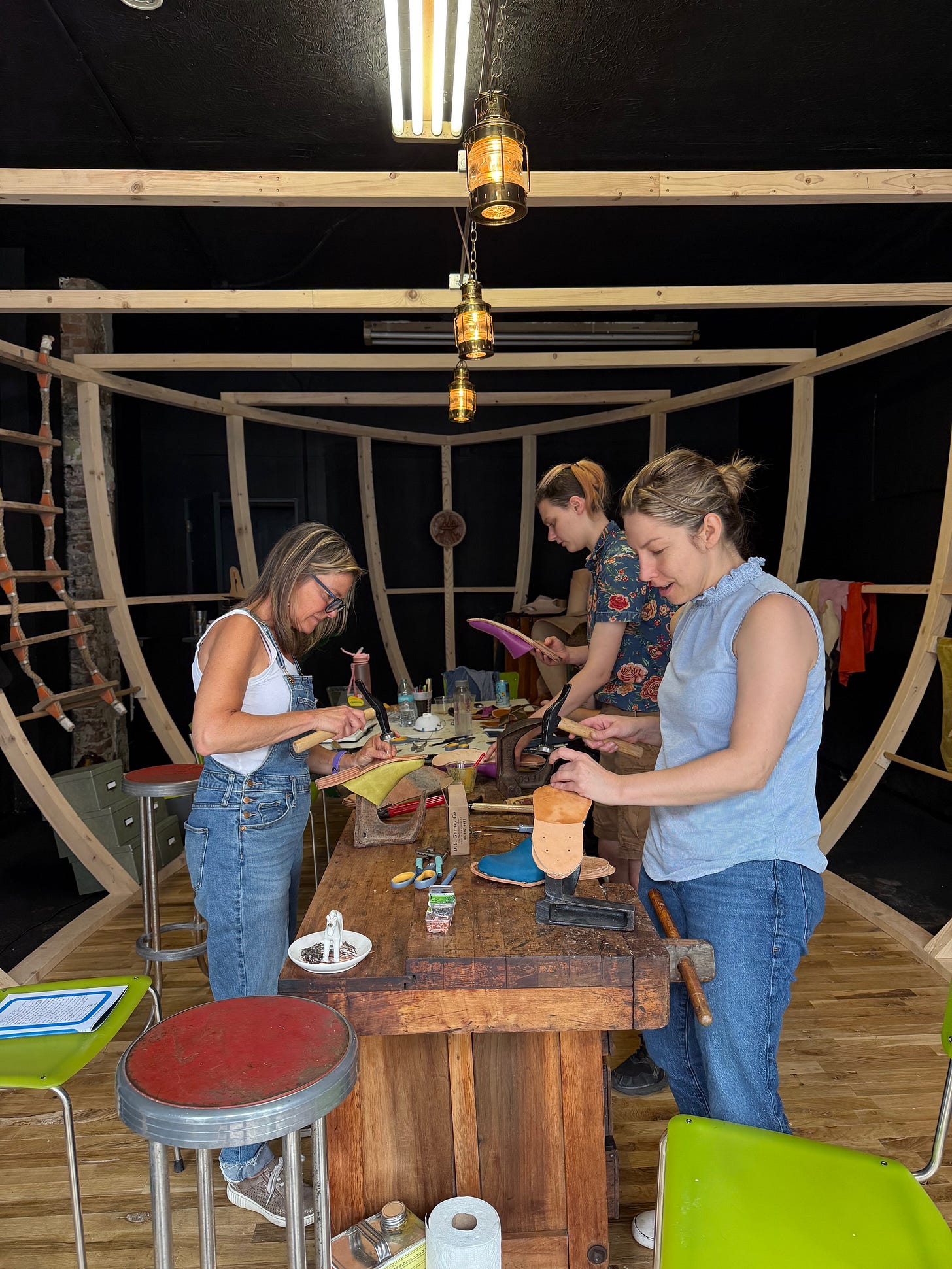
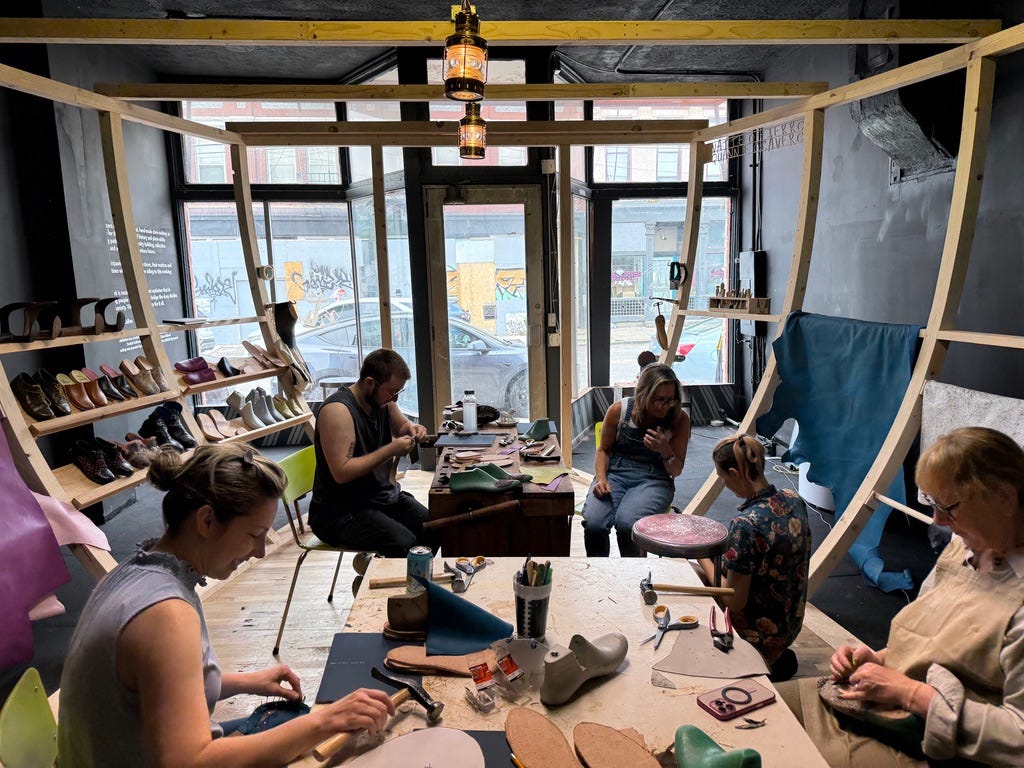
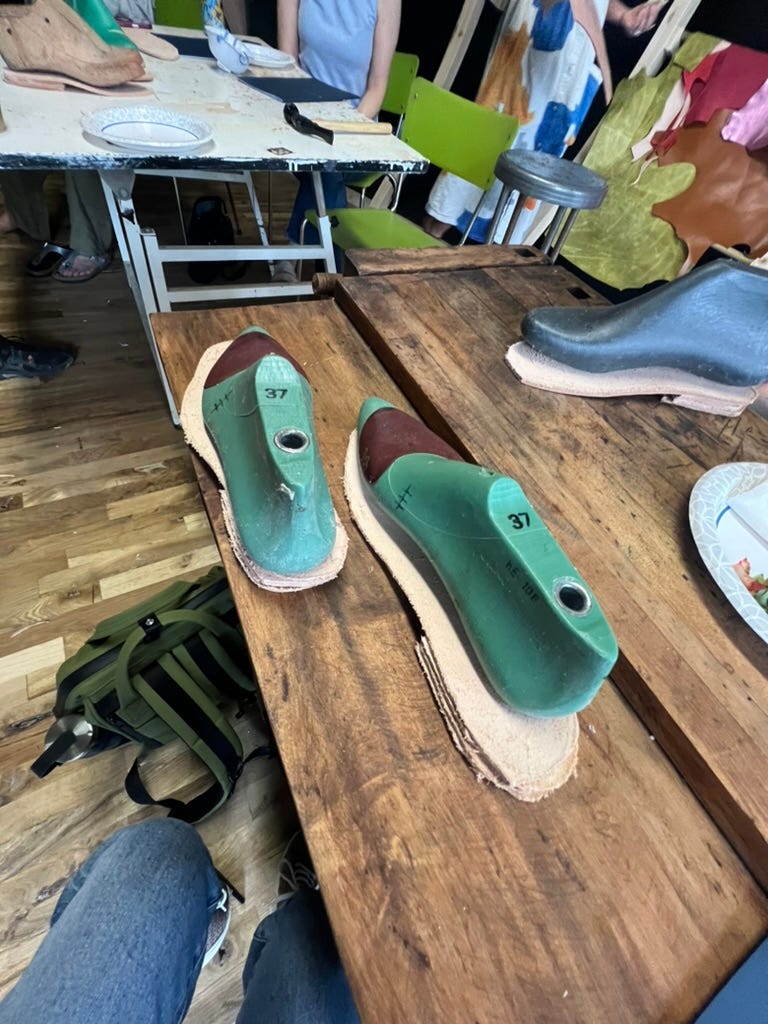

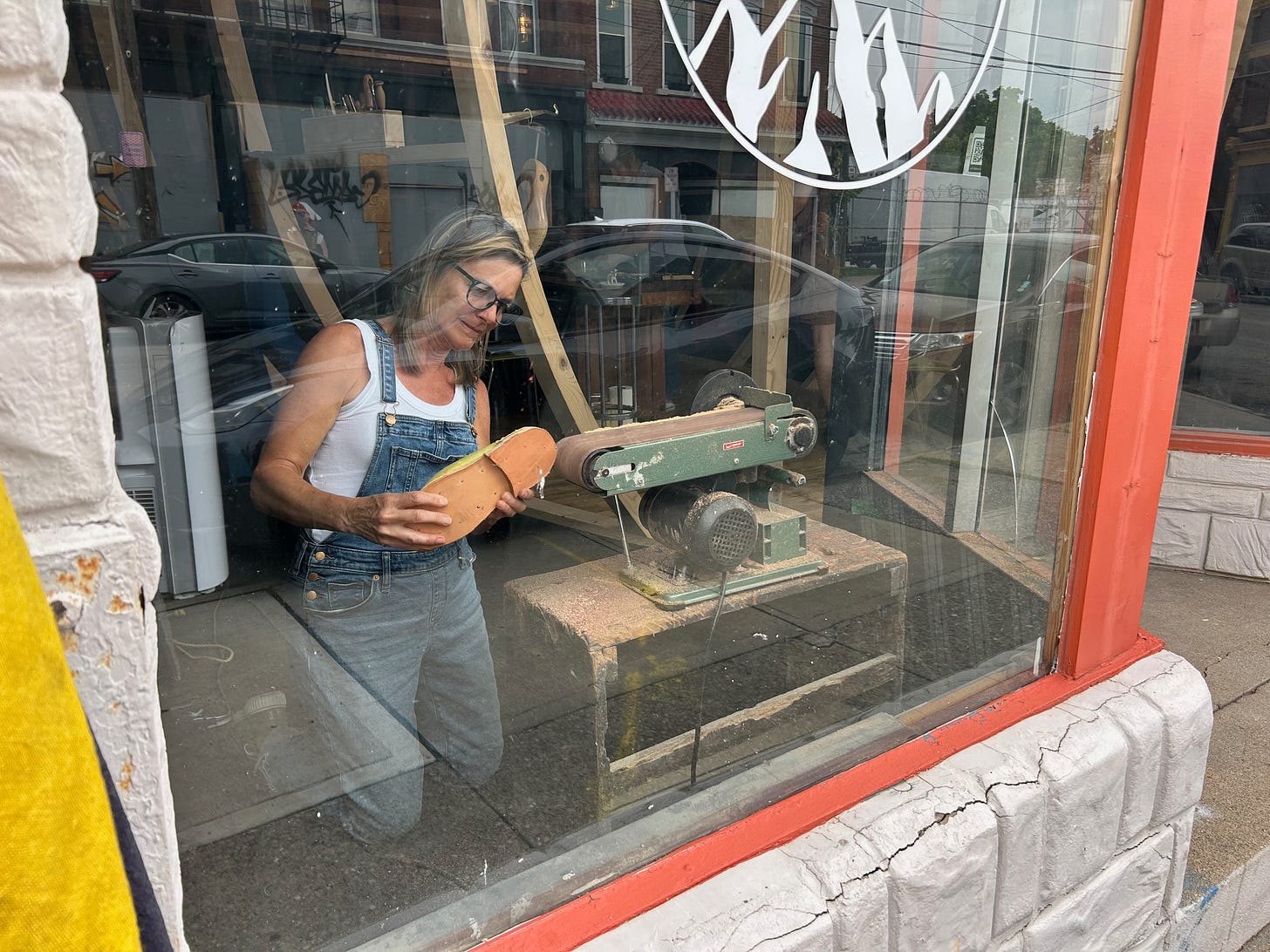

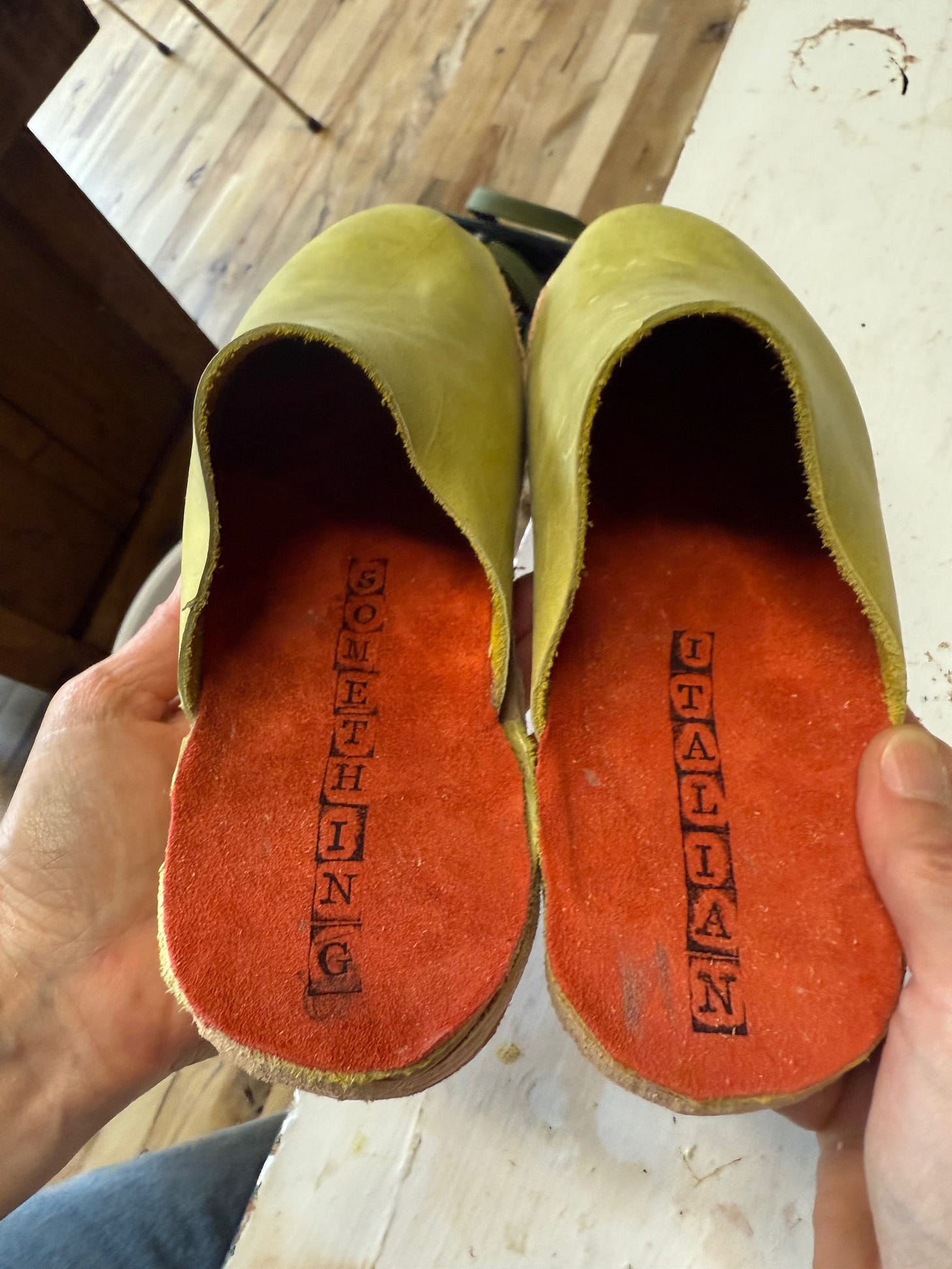
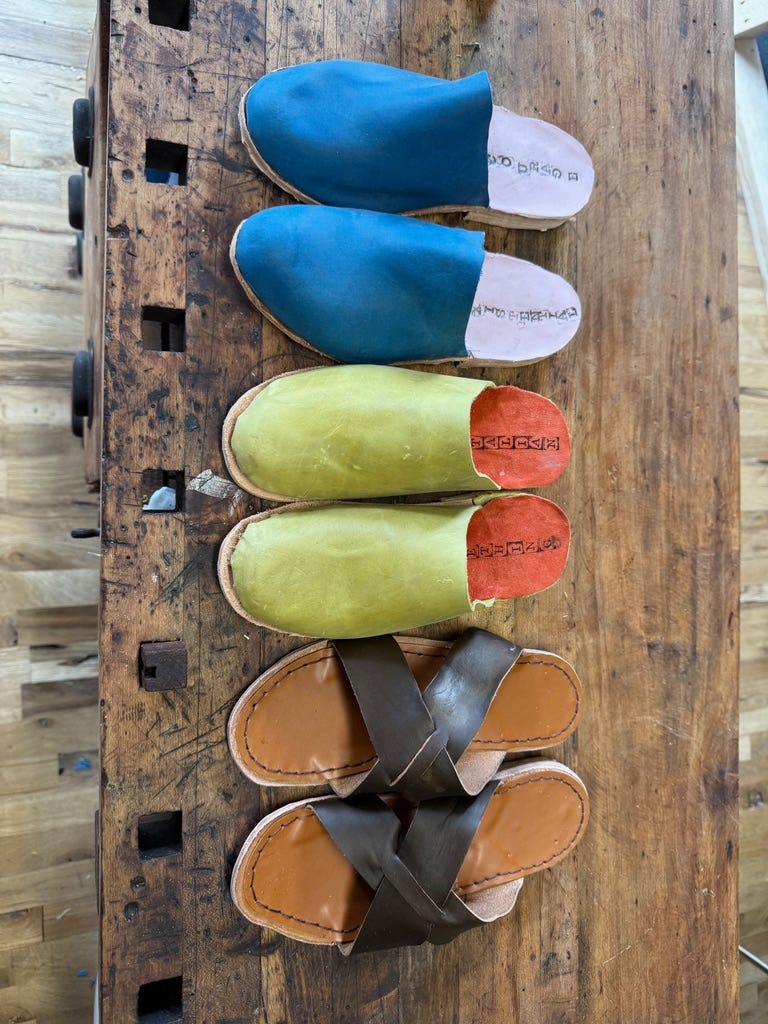
Love your morning finds. As usual so enjoyable plus love your shoes. Now you can make shoes for your friends. 🥿
For me I would like boots. 👢 Thank you. 💕